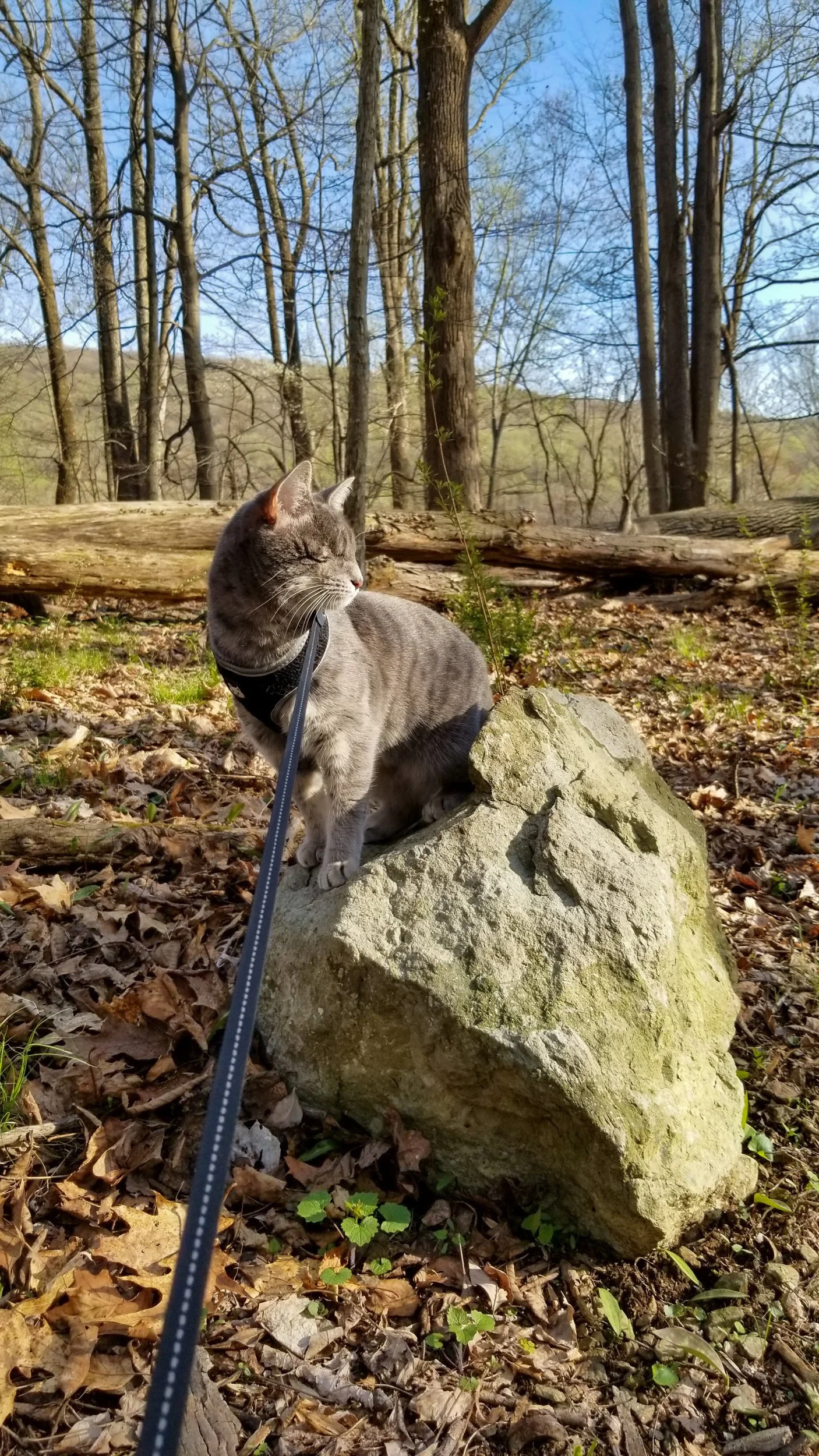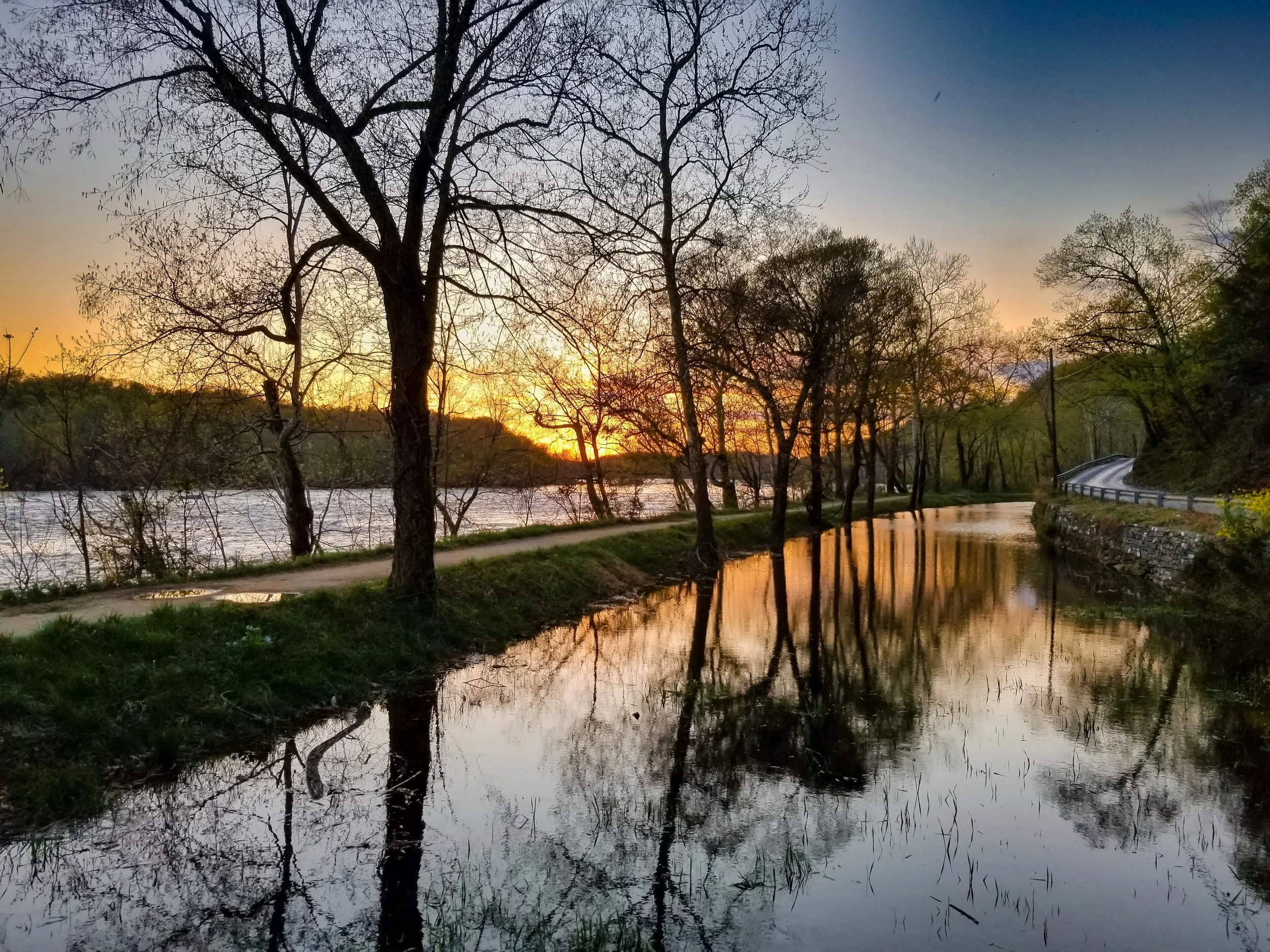Northeastern US: Maryland to New York, 2019
Looking Back: Celebrating Four Years of Van Life
Second in a series
Maryland
18 April 2019, Catoctin Mountain Park
Spotlight on Samus, my co-pilot.
Sammy won’t get into her carrier to hike with me anymore. Not the way she did as a kitten. She’s too independent now. Since she’s blind, we can’t make any distance progress when she’s on-leash.
I simply let her explore at her own pace,
climbing and pouncing, stalking and smelling. We don’t get far. Still, it’s much more entertaining and certainly healthier for her than inside the minivan.
There was not yet any substantial hint of spring at Catoctin Mountain Park, only winter’s grays and browns.
That was fine by me. I prefer the off-season. Places are less peopley then.
I spent our time in the park making photos of Sammy like a crazy cat lady. She’s cute, but I would’ve like to explore. Although, we arrived late in the afternoon, fast losing daylight. The park would soon close.
It was delightfully surprising that this area, only an hour or so from the Baltimore/DC metro area, felt so remote. Likely why Camp David, “the President’s country residence,” was established nearby. While park maps deliberately do not indicate the location of Camp David, Google Maps has no such qualms.
Pennsylvania
19 April 2019, Gettysburg National Military Park
Arriving very early in the morning, I was captivated by the quiet. I can’t call it stillness. There were birds and squirrels and runners. The runners surprised me. As a visitor, it seemed somehow disrespectful.
From a resident’s perspective, why wouldn’t you run in the most beautiful place in town? It’s almost ludicrous to run in the street when the park is six thousand rolling acres of footpaths and wooded trails.
As I walked those paths, it was only a few minutes before I was profoundly sad. I had barely begun the self-guided tour. Although, I already knew the numbers: nearly 50,000 soldiers and 4,000 horses killed over three days at the Battle of Gettysburg in 1863.
There were more monuments than I could manage. The information was overwhelming.
I tried to imagine the chaos and fury of hand-to-hand combat. The deafening cacophony of musket fire, cannon balls soaring and landing, human conflict, fear and suffering, hooves pounding, horses manic with distress. The stench. The smoke. The terrain. The weather.
I could not truly conjure the horror. And the aftermath. It’s all beyond my comprehension. But it’s enough to question why humans continue to escalate conflict to violence. And to be appalled by how, in some ways, the U.S. has not come far at all in combating racism, nor in strengthening and protecting our quite fragile civil rights in the 160 years since then.
Awkward and abrupt segue back to me, because all of this is ultimately about me anyway: I was unable to make even adequate photos of the park. I wasn’t shooting in RAW, I was still using only automatic settings, I wasn’t using my tripod regularly. Most of the photos from my first year or so on the road are awful.
Still, I was out there trying. And learning.
That’s one reason I’ve returned to Gettysburg each year since. Walking that battlefield is almost a meditative retreat for me. I keep trying and learning.
New York
21 April 2019, Pawling
The Applachian Trail station on Metro-North Railroad’s Harlem Line is the only rail station directly located on the Appalachian Trail (AT).
It’s ridiculous how geeked out I am by this. AT thru-hikers are enigmatic rock stars to me.
What motivates a person to walk thousands of miles, living outdoors all the while, in harsh conditions?
Hard stop.
I’m compelled to comment again on the mediocrity of my photos. It’s embarrassing. How can I fully illustrate what I was seeing with photos that are only so-so?
With spring not quite sprung, I wasn’t inspired to photograph the brown landscapes and gray skies. As I continued northward, I learned about mud season. The time between snow melt in March and May or June. That fifth season is perfect for me and my penchant for less people, but I didn’t find it photogenic at all.
In my heart, I was conflicted; I felt I should be publicly documenting this incredible new chapter of my life despite the dreary weather. However, learning how to live van life took priority. Discreetly at that. I wasn’t traveling in van life-friendly territory.
The minivan is not particularly stealthy. In the south- and northeast, I overnighted primarily at rest stops, Walmarts, 24-hour gas stations, and truck stops. New to the lifestyle, it was stressful finding safe places to sleep. As I was moving north at a good pace, I slept some where new every night.
Planning was time-consuming. I had to estimate how far I might drive on any given day, take into account the hours necessary for my part-time job, factor in time to stop and explore what interested me, and consider the possibility that some places didn’t allow overnight parking. There were plenty of nights I drove long distances in dark, unfamiliar areas hunting for a place to stay. It still happens. But these days, I’m not anxious about it.
Featured title image: Potomac River, Knoxville, Maryland
Next: New England!
Please feel free to leave questions in the comment section if there are aspects of my van life you’d like to know more about.
Become a subscriber so you don’t miss a thing.











